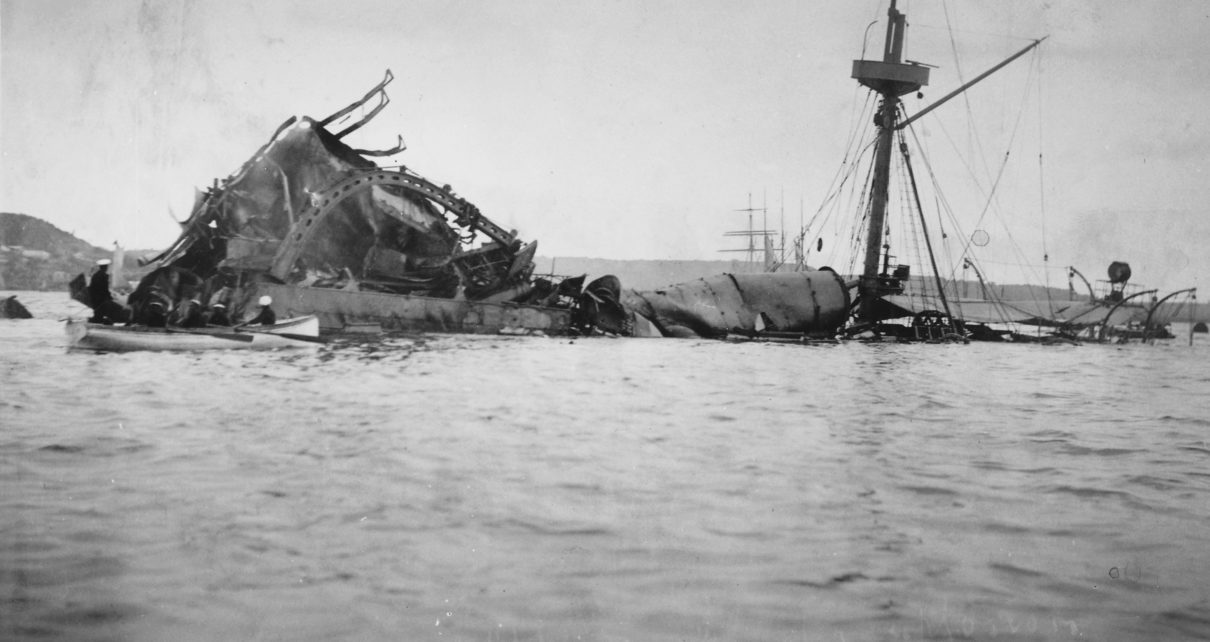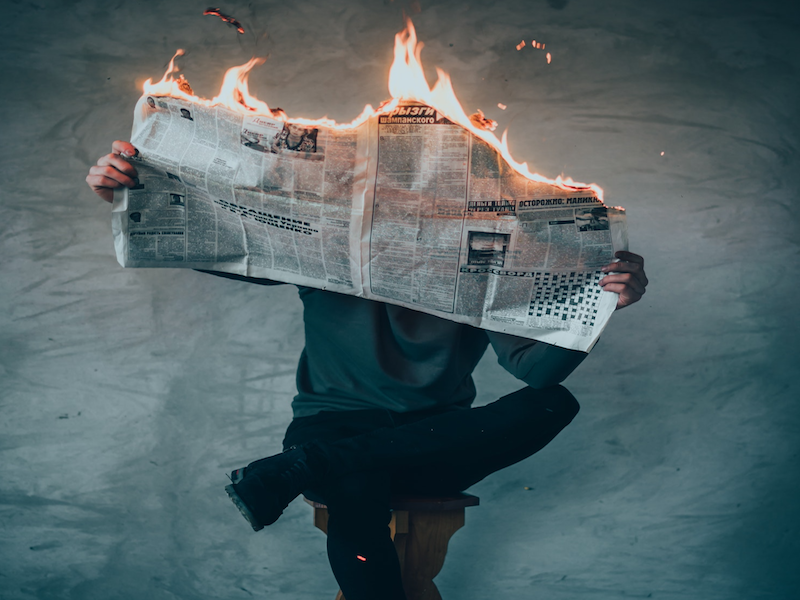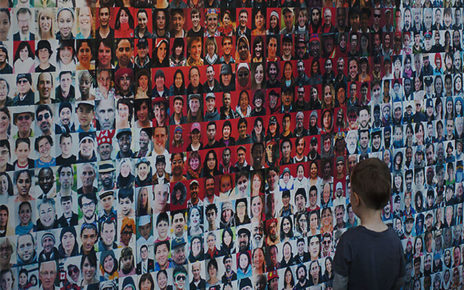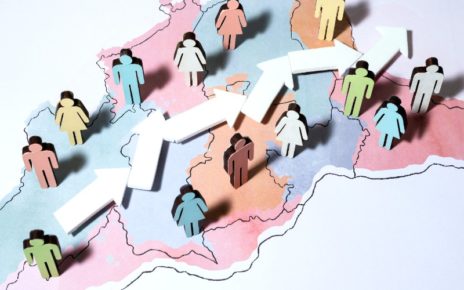As the international system appears to be once more defined by the rise and fall of great powers, the US’ ascendancy to its current position as a superpower offers an important historical case study. This ascendancy began during the Spanish-American War, a conflict that defined a new age of US foreign policy and placed it within the realm of great power politics. A century after its adoption of a policy of relative isolationism, the US deployed a significant number of forces overseas to dislodge a declining great power from its last colonial possessions before effectively constructing its own empire across the South Pacific and the Caribbean. Aside from its effect on the grand strategy of the US, however, the conflict also featured another contemporary concern, that of disinformation, which was largely propagated by the period’s “yellow press,” a form of journalism notable for its sensationalist and often false coverage. These parallels between 1898 and 2022—renewed competition between great powers, an information environment saturated with disinformation, and a resurgence of nationalism— highlight the pertinence of the lessons of the Spanish-American War to contemporary policymakers.
From the beginning, the US’ war against Spain appeared both pre-ordained by the realities of the international system and as spontaneous as the explosion that sank the USS Maine in Havana Harbour the night of February 15, 1898. A growing industrial and military power, the US emerged in the latter stages of the nineteenth century with a desire to use its newly minted naval strength to expand its own territorial holdings abroad and secure the Caribbean as an “American Mediterranean” in which American military and economic power would remain unchallenged.
The chief obstacle to this desire was the Spanish Empire, which while having declined from its previous heights, remained a formidable opponent in the region. After first having attempted to purchase Cuba from Spain multiple times over the course of the century, the US’ decision to engage in a war of expansion reflects a long-standing trend within the international system as rising great powers have used conflict to extract gains from declining rivals. However, the more immediate cause of the conflict occurred under unclear circumstances, which ignited public outrage and pushed the nation into a conflict of oceanic proportions. Responding to riots that had consumed Havana, President William McKinley dispatched the USS Maine, which had sunk three weeks after its arrival due to an explosion that ignited its powder storage. A week after the US declared war, its navy won a decisive victory at the battle of Manila Bay and another at the Battle of Santiago, effectively forcing Spain to agree to an armistice, which was signed in December of that year.
After the guns fell silent, the US emerged into an international system whose foundation of European military supremacy had begun to erode. The war demonstrated that the US was capable of sustaining a campaign of empire building at the expense of its European adversaries and asserting its regional hegemony, having secured the right to intervene in Cuban affairs under the Platt Amendment, a treaty signed between Washington and Havana. Only six years after the conflict in the Americas, Japan scored a major victory over Russia in the Russo-Japanese War, demonstrating the impact of rising non-European powers on the international stage. Further, the war also represented a dramatic change in war reporting as the rise of the “yellow press” brought the conflict, and its own biases, into the hands of millions of Americans.
The media landscape of the period was largely defined by technological innovation and sensationalized reporting. The emergence of the telegraph, which began operation across the US in 1844, allowed for near-instantaneous communication across vast distances in a widely accessible format, resulting in newspapers becoming more efficient outlets for the dissemination of information. This development was combined with editorial decisions that often granted false stories front-page coverage and was heavily slanted towards American intervention in Cuba. Both the New York Journal and the New York World, two of the period’s most prominent publications, dedicated significant coverage to the Cubans’ cause, frequently running sensationalized stories that depicted the horrors of Spanish rule and the bravery of Cuba’s rebellion. Despite the end of Spanish rule over the island however, the legacy of the war and the period’s style of press coverage still remains relevant in the contemporary moment.
Glancing at an atlas, the legacy of the Spanish-American War remains clear. Puerto Rico, Guam, and Guantanamo remain under American jurisdiction just over a century after the Treaty of Paris, with the latter two still hosting military installations critical to both the 9/11 Wars and renewed strategic competition with China. Although the age of empire-building has largely disappeared and discussions of “manifest destiny” are typically resigned to commenting on the famous John Gast painting, the US’ status as a global power remains no less important today than it did during the previous two centuries. Moreover, the conflict’s larger context of great power competition and disinformation remains immediately pressing in the present moment. The lessons offered by the conflict for contemporary policymakers include recognizing the importance of a state’s near-abroad to its foreign policy, the structure of the media landscape, and the interactions between strategic narratives and ingrained societal beliefs.
As with latter-day great powers, the US considered itself a steward-like figure of its near-abroad, particularly Cuba. US foreign policy, from the Monroe Doctrine, which stated that the US would no longer accept European interference in the Western hemisphere, to the battle for San Juan Hill, centred around maintaining its influence over its strategic backyard, a common drive among all states, but particularly those that have invested in power-projection capabilities. However, rather than merely being interested in establishing regional hegemony, the US also viewed itself and Cuba as having long-standing ties, including a shared desire to counter what they perceived as European tyranny. Both tendencies are also present within contemporary Russian and Chinese foreign policy, whether articulated or strongly implied, respectively, as evidenced by Russia’s reaction to NATO expansion or China’s attitude towards Taiwan.
This lesson additionally highlights the utility of both realist and constructivist paradigms to countering disinformation. Relying upon the arguments of realists, disinformation may be recognized as merely an avenue through which great powers compete for material benefits, such as Russia’s use of information campaigns to influence Ukrainian civilians to capitulate to Moscow’s attempts to claim sovereignty. In contrast and predicated on the belief that states’ actions are driven by their perception of themselves and others, disinformation may also highlight states’ struggles to secure their own sense of identity within the international system and realize their own agency. As a result, rather than purely a tactical decision, disinformation may also illuminate a state’s character, whether expressed by an authoritarian or democratically elected leader. Both China’s style of Wolf Warrior Diplomacy and Russian propaganda, while typically reliant on falsehoods, also often displays how these powers understand themselves and illustrates how their self-image influences their behaviour, a phenomenon that should be recognized by policymakers.
Further, although relatively technologically underdeveloped and print-centric, the period’s media environment remains starkly comparable to that of the first two decades of the twenty-first century. Though the period of strictly partisan newspapers had declined by the Spanish-American War, professional media standards were nearly non-existent, with sensationalized, often patently false information spreading freely across the industry, whose sway was nearly unparalleled. These conditions are comparable to the present, as unevenly moderated social media platforms have become the dominant medium for information-sharing, even as these companies themselves do not directly shape the narratives presented by their algorithms. Rather than a relic of the past, the tactics of the “yellow press”, along with partisan media outlets, have re-emerged as outlets rely on increasingly sophisticated technology to produce intentional falsehoods within a marketplace that values sensationalism, presenting new concerns over the influence of these fabrications on the processes of democratic governance.
However, the Spanish-American War was not directly caused by disinformation, but rather by the intersecting relationships between the media, the public, and political leaders. The war was not merely a political reaction to the media-induced public fervor over the sinking of the USS Maine. Rather, it was the culmination of a particular culturally informed strategic doctrine influenced in part by a media landscape dominated by narratives that consistently portrayed the US as racially superior and exceptional within the international system. As such, the US’ experience highlights that the mere presence of disinformation does not guarantee it will become influential, a potential argument against policies advocating for greater public or private forms of censorship of intentional falsehoods. Instead, disinformation only became pertinent to the war once international events and pre-existing beliefs began to align as violence 90 miles off the coast of Florida offered validity to the claims that a nefarious Spain posed a significant danger to American interests.
The false narratives produced by the “yellow press” found purchase among the public due to their congruence with popularly held pre-existing beliefs. Although the US remains a deeply religious nation, particularly in comparison to its peers, the religiosity of American society at the end of the nineteenth century deeply affected its politics and foreign policy. The widespread belief in America’s “mission, expressed in explicitly Christian terms, to counter oppression abroad, extended to the Spanish-American War as evidenced by President William McKinley’s invocation of a militant sense of righteousness in expressing his public support for the war. This belief was also expressed through a racialized lens, as Americans internalized the belief that the US was racially superior to the Spanish Empire and thus in a position to spread “civilization” to others.
These pre-existing attitudes are still critical to the effectiveness of disinformation, whether through bolstering consumers’ confirmation bias or intersecting with historical sentiments, as evidenced by Putin’s focus on Ukrainian Naziism and consistent references to the Great Patriotic War. The lessons offered by the Spanish-American War to present-day policymakers highlight the need to focus not only on the messages themselves, but also their connection to a larger set of societal narratives and identities that may ultimately define disinformation’s impact upon the population.
As the rise of the US to a position of global power now appears pre-ordained, the Spanish-American War has faded into the country’s past. A Spanish victory would have likely left the US embarrassed internationally but would not have fundamentally damaged the basis of its power. The US would have continued to maintain its dynamic, industrializing economy, fed by its abundant natural resources and its continental-sized market, and its geographic separation from the European balance of power. During the conflict, however, such an outcome was far from certain, with the US’ experiment in being a great power facing a formidable obstacle only 90 miles to the south. In response to these pressures, disinformation within the US flourished, driven by technological change, and adapted to fit pre-existing national identities, just as disinformation has followed Russian and Chinese challenges to the rules-based international order. Then, as now, the fog of war only settles once the firing has started.
Image copyright: “Wreck of the USS Maine – low tide – Havana Harbor Cuba – 1911” by Tim Evanson via Flickr. Licensed under CC BY-SA 2.0.
Disclaimer: Any views or opinions expressed in articles are solely those of the authors and do not necessarily represent the views of the NATO Association of Canada.




